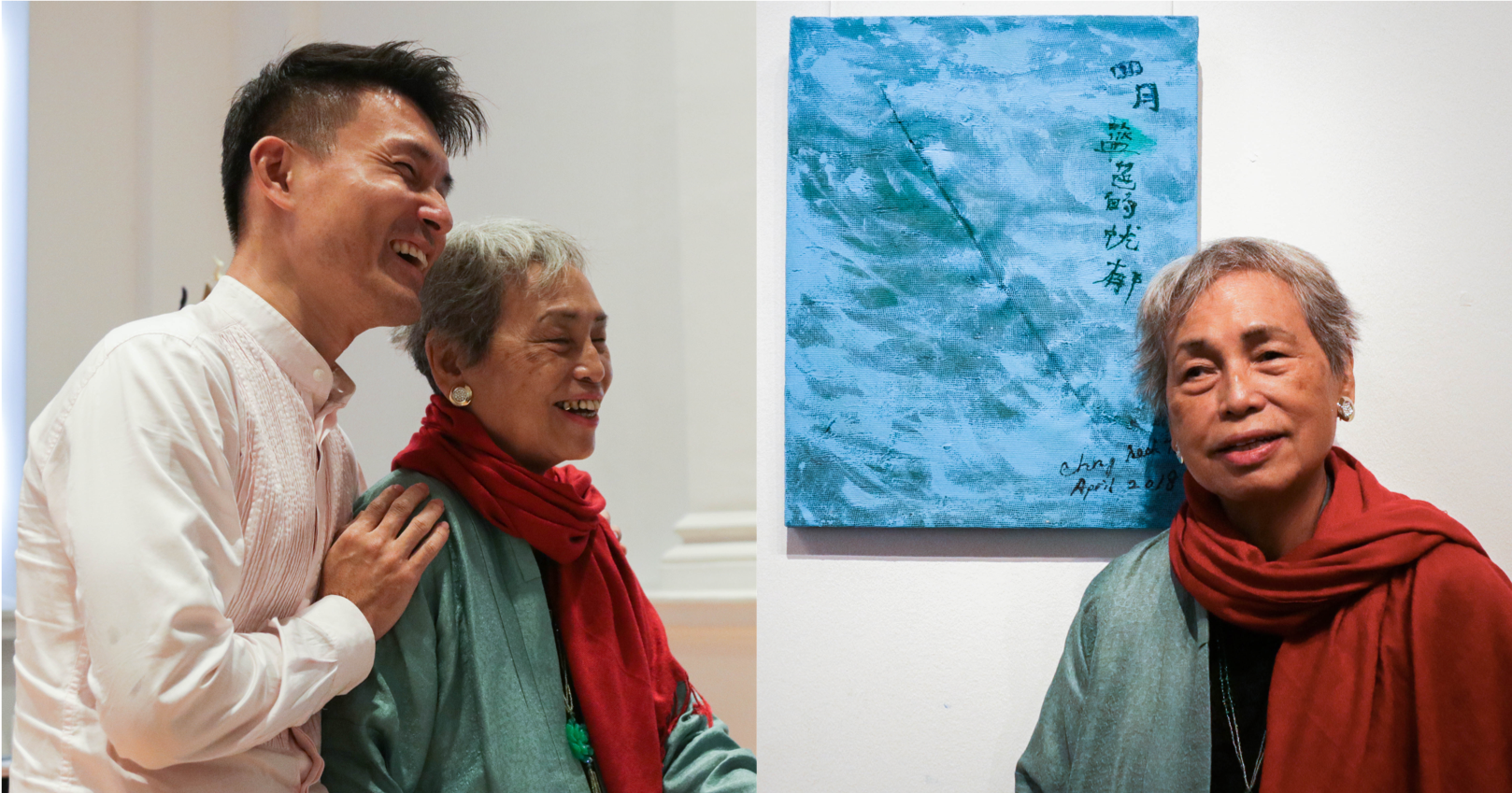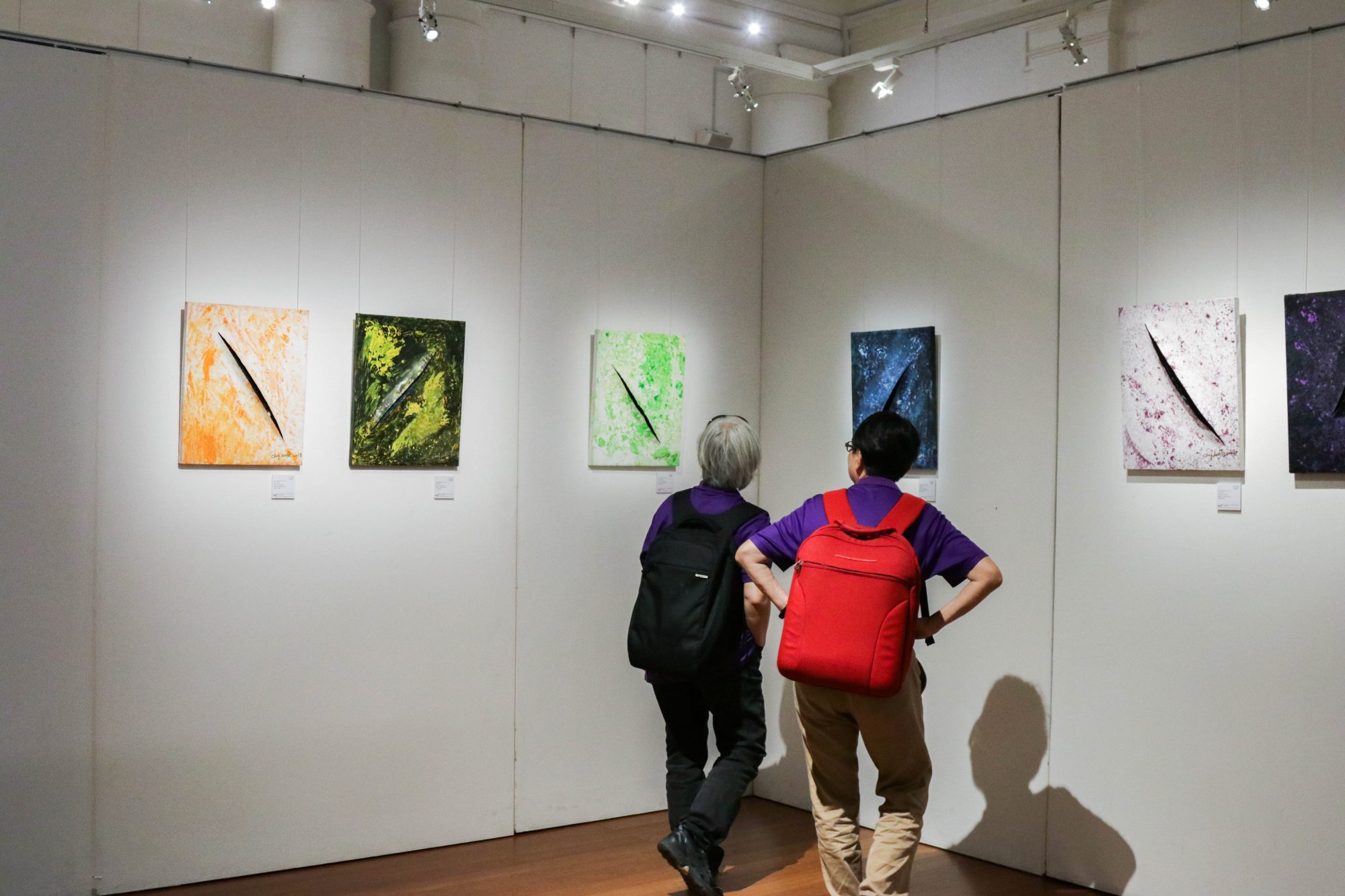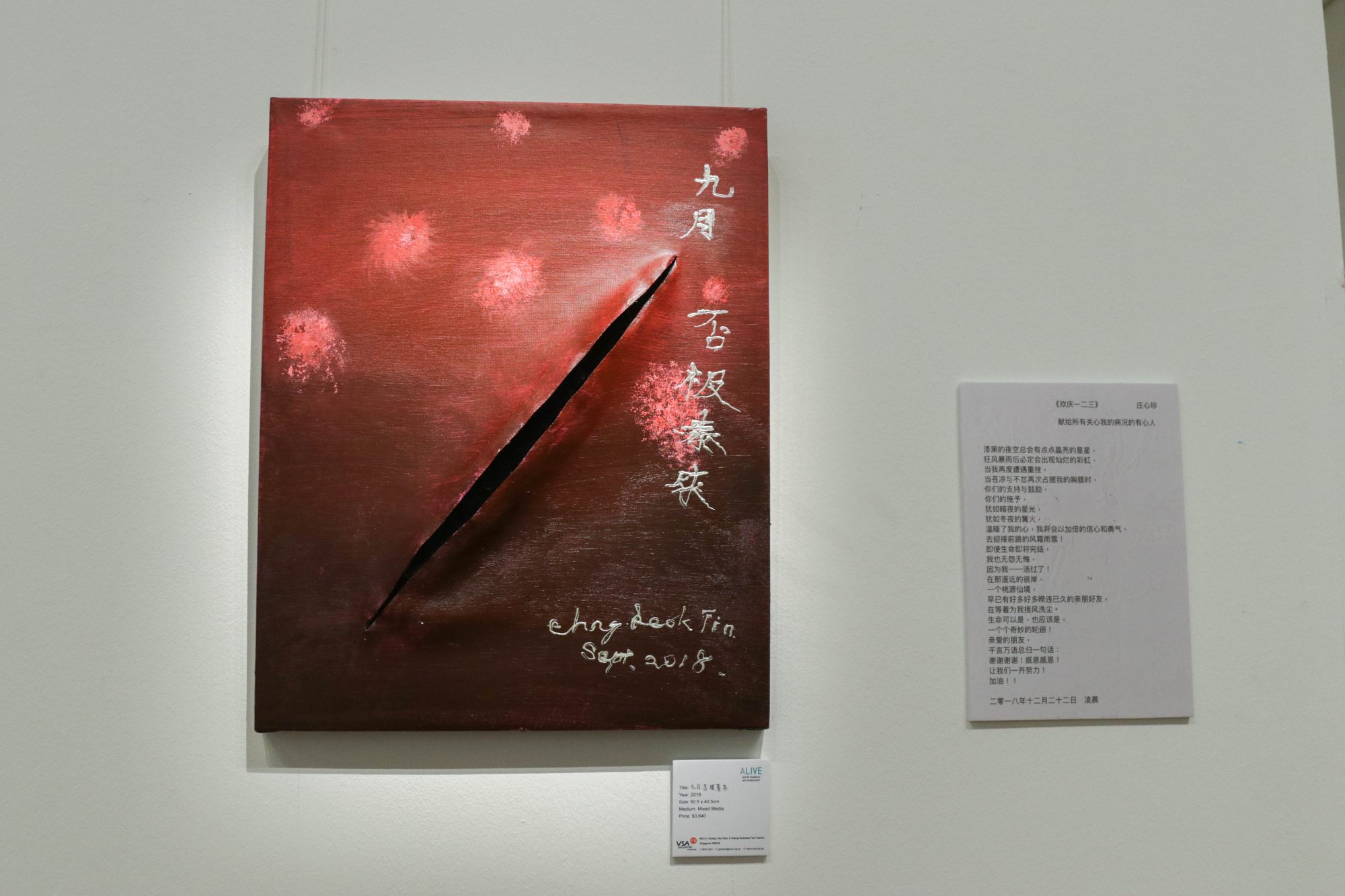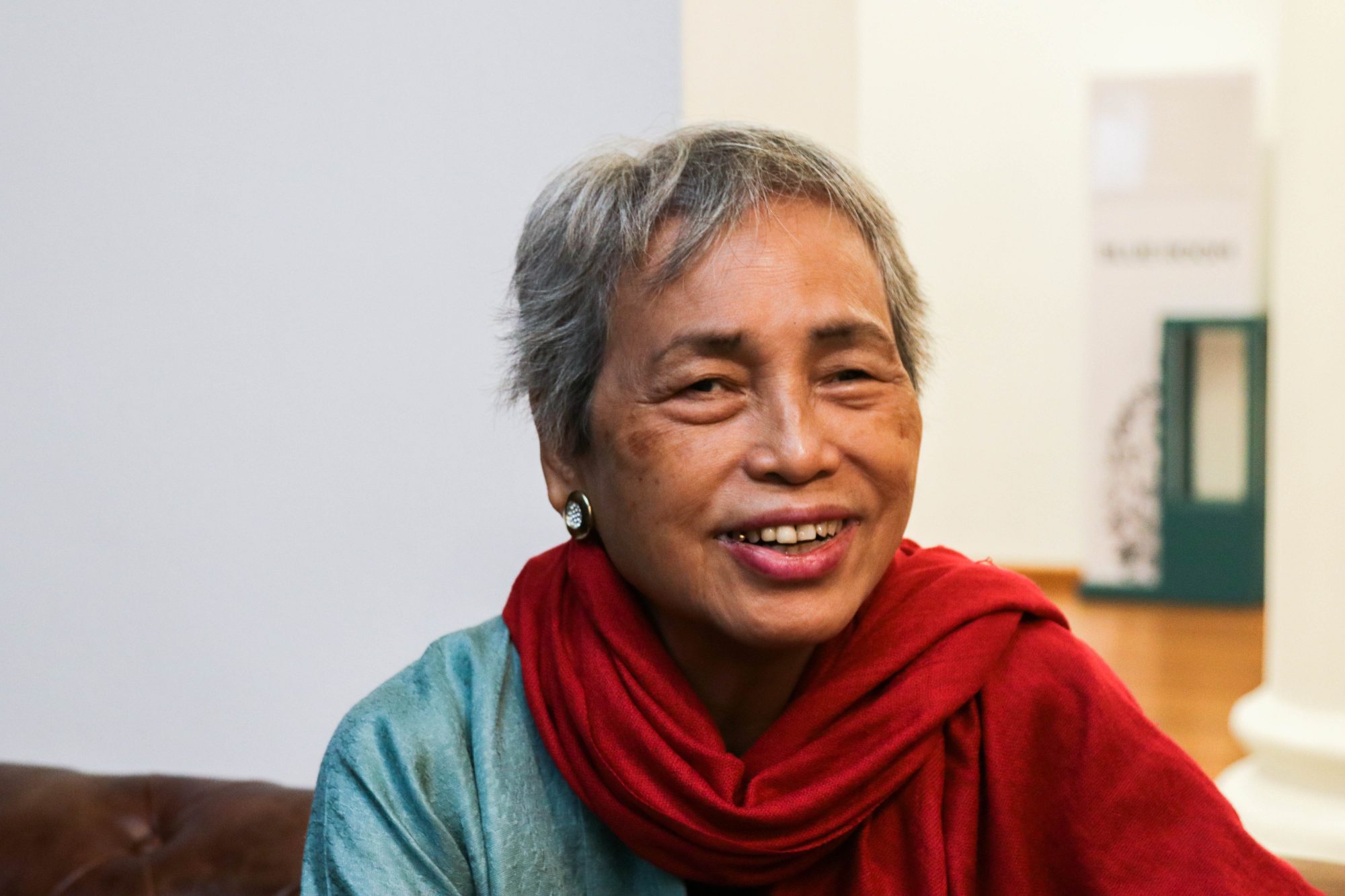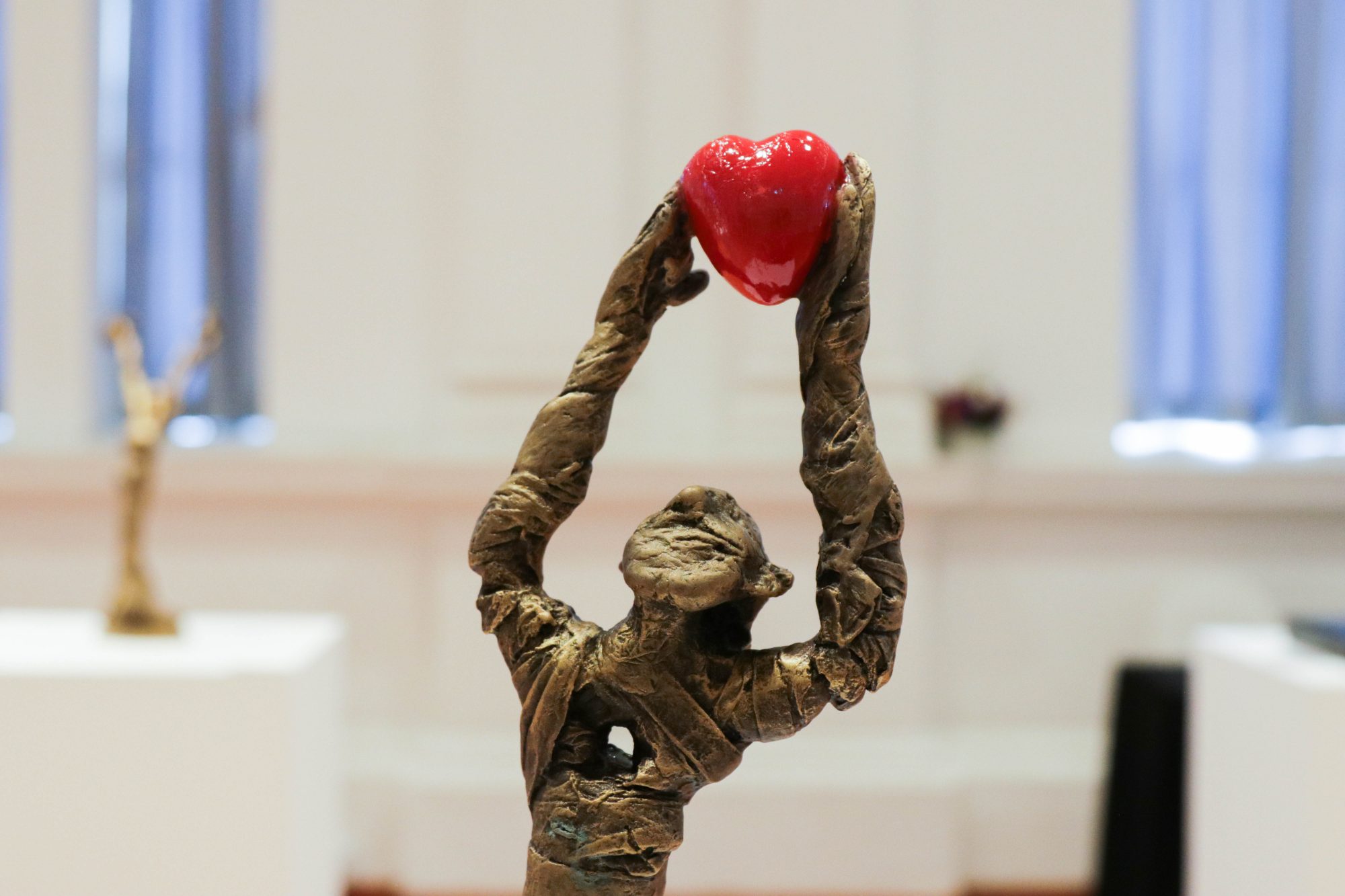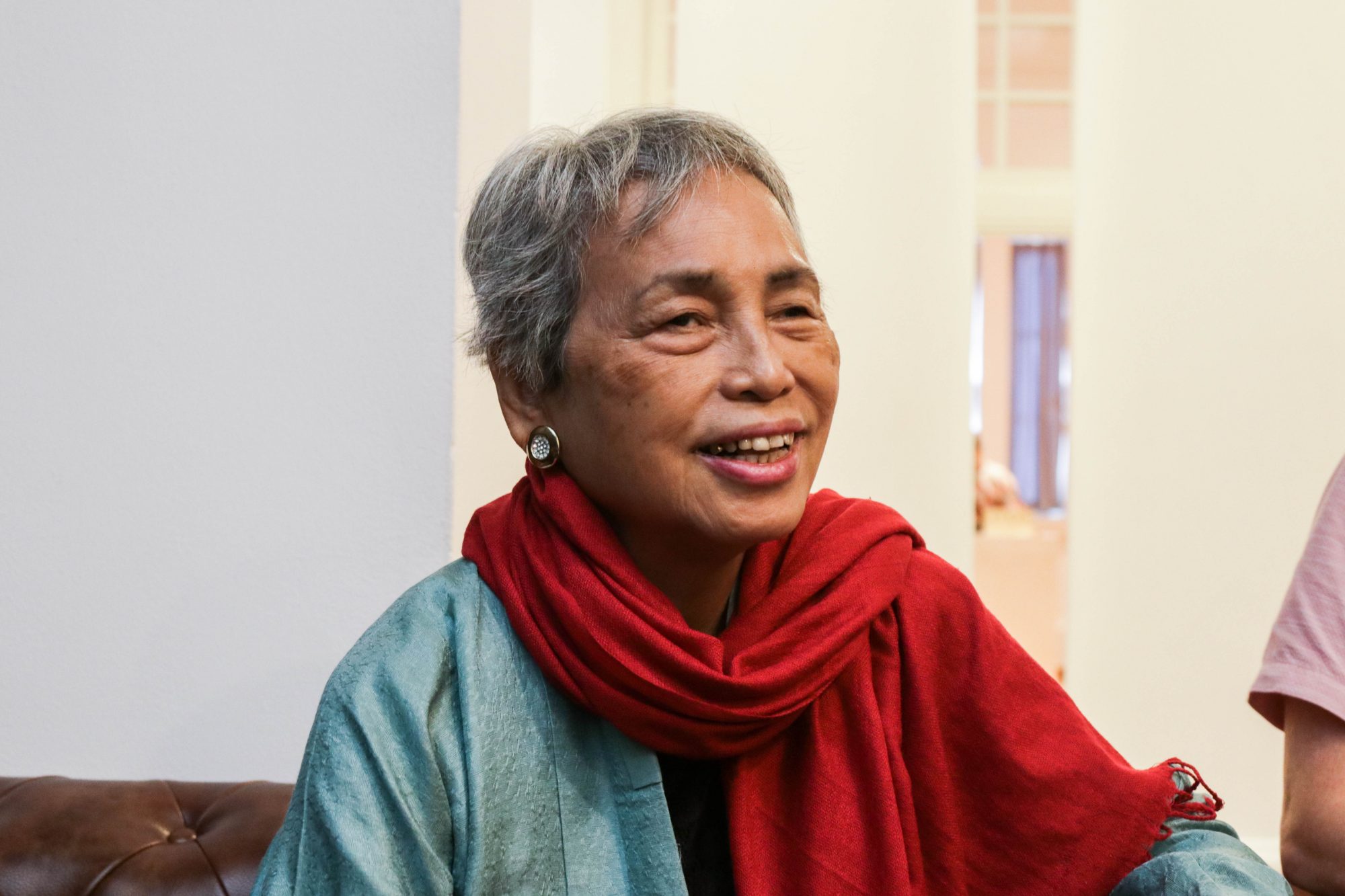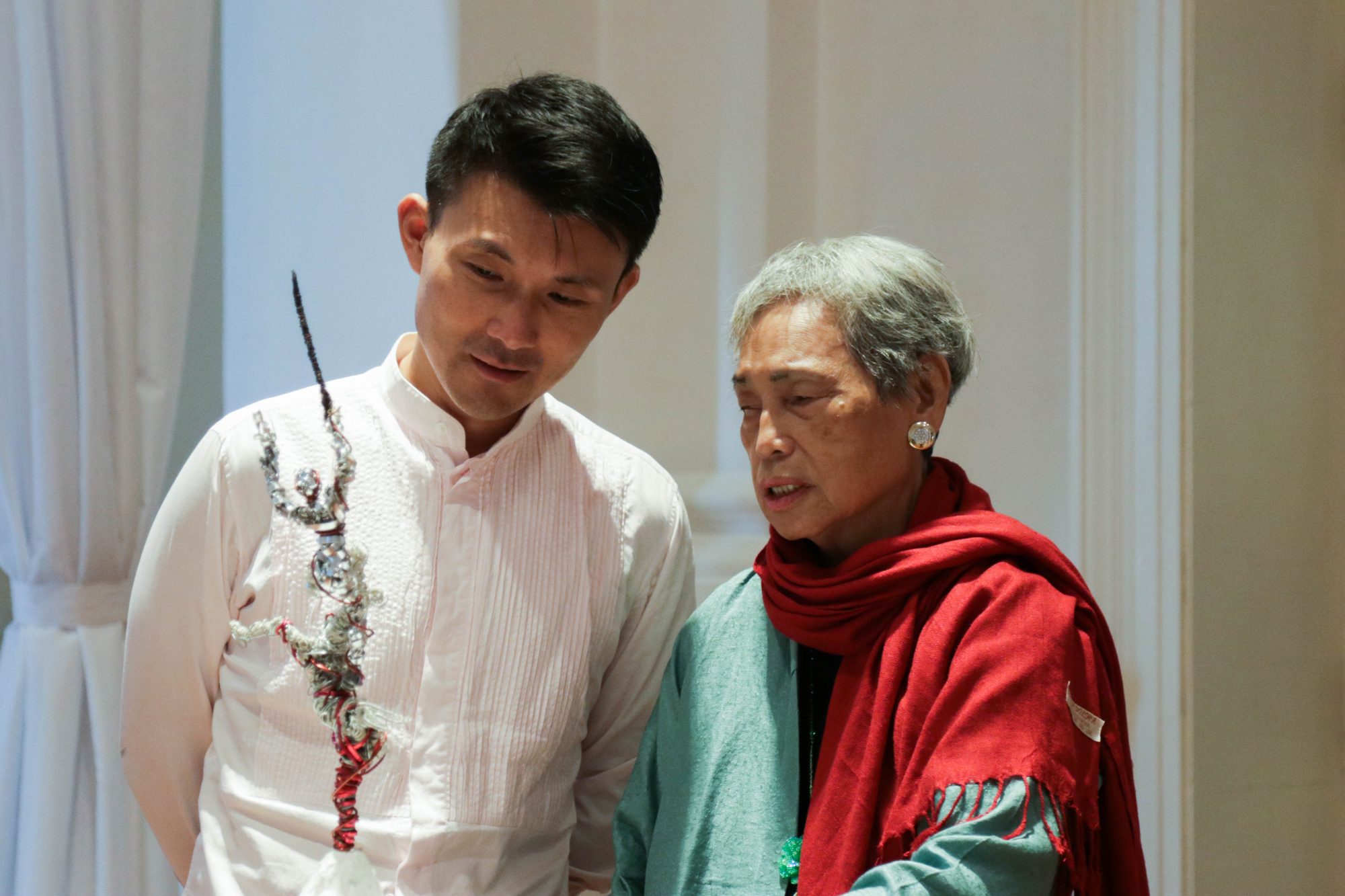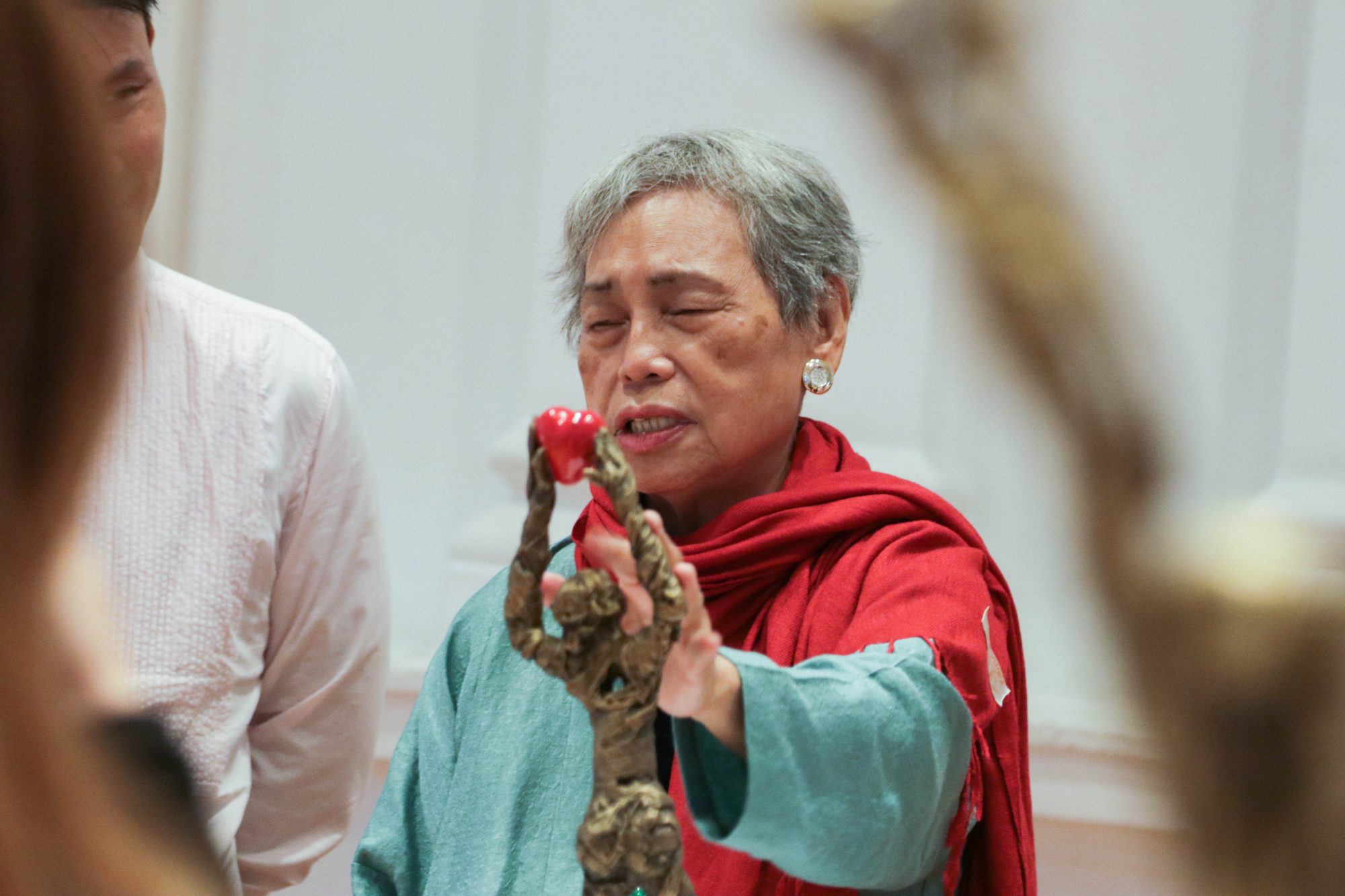The most interesting detail about artist Chng Seok Tin's "Celebration" series of paintings is their most obvious flaw: every painting has a huge diagonal slash across its canvas.
While most painters would deem them unusable, she tells us that inspiration struck when she learned about these old canvases a friend of hers had on hand.
"I did not cut it purposely. That is an old canvas given by my friend, they said somebody wanted to throw away all these canvases. So they cut it up...
So I made use of them -- put some black colour (paint) inside the hole. It's an indication that the past can be terrible. There is a dark side, and you have past injuries, and a lot of sad things that happened in your life."
 Photos by Rachel Ng
Photos by Rachel Ng
"Celebration", three paintings in blue, red and yellow, is the latest set of artwork Chng has made. The colours symbolise her changing emotions as her physical condition improved or deteriorated.
Apart from these three, Chng created another series from the cut canvases called "A Symphony of Life":
"It’s a series of eight pieces, one white one black, like piano keys. The rainbow colours always symbolise that people are happy, so I put the seven colours. And the last one are all seven colours put together, using marbling technique."
And even though the 72-year-old multiple-award-winning artist has held more than 25 solo and 138 group exhibitions over her decades-long career, this latest exhibition called "My Journey", where she is showcasing "Celebration" among other work that traces her life and career, could well be one of the closest to her heart.
It was held in January during the Singapore Art Week, and supported by her longtime enabler, Very Special Arts.
But first, we should explain why we're talking to Chng and telling her story at this point, for those of you not acquainted with her moving life so far: the 72-year-old is a multiple-award-winning artist — these accolades include the 2005 Cultural Medallion, and her entry to the Singapore Women's Hall of Fame first year of awardees in 2014. In her early years, Chng was a rising star, on scholarship and studying printmaking in the UK, as well as two Master's degrees in arts in the U.S.
She returned to Singapore and took on a teaching role at Lasalle, also holding residencies in the U.S. and China, and was also a prolific Chinese literature writer, until she suffered a freak accident during a school trip she had brought her students on in London that led to her falling from a bus they were trying to catch.
Her head hit a pavement, and learned she had a brain abscess that she went for surgery two months later to treat, but when she gained consciousness from it, Chng realised everything was different — she would go on to eventually lose 90 per cent of her eyesight.
And now, she takes on her latest, biggest battle in her life — Singapore's number one killer: cancer.
Diagnosed with Stage 4 lung cancer
Chng describes her symptoms matter-of-factly. She began feeling breathless, and went for a check-up, thinking that it was a heart condition.
Once she received her diagnosis, she was asked to take a cancer-treatment drug. But she suffered from "harsh" side effects, including ulcers on her scalp.
"(It was) very painful. Sometimes, it's horrible," she recalls.
Her emotional state inspired the next two paintings in the "Celebration" series, yellow and red.
She started feeling better in September 2018, having gotten over the side effects of the drug, and went for another scan in November 2018.
Unfortunately, she received even worse news. The cancer cells had spread to her liver, and even her current treatment would not help.
Going off chemo
Chng was asked to go on chemotherapy. But she decided not to go ahead.
"Because I find my situation, I still can eat, can walk, I feel ok. I don't feel very sick. Under chemo, maybe the quality of life will be bad.
My oncologist also agreed, she said it might affect your quality of life, you might feel tired, you might suffer some side effects. It might come back again."
Chng has turned to Traditional Chinese Medicine in the meantime, but her condition has affected her work, as expected.
Still, she manages to find one bright spot in the situation.
"Of course I slow down a bit, I don't want to be so kancheong. Usually when we sit down there and do nothing, we feel guilty. 'Aiyo, how come I'm so busy ah, we waste our life, we waste our time, we waste everything.'
Now I can sit down there and do nothing. Slow down and then try not to make your life so hurried and so tight, so tough."
Chng has six siblings, although her elder sister has passed away. They have been supportive since her diagnosis.
A sister-in-law helped to find the best TCM doctor to see Chng, while a brother-in-law agreed to pay for an "expensive" supply of medicine for one month. She's grateful for their help.
Over the years, a change in style
Chng's exhibition, as we mentioned earlier in passing, includes multiple other pieces of her work that traces her career, and also reflects her life over the years.
She believes her style developed "naturally" over the years. Paying her way through school after her initial years as a Chinese teacher, she started her training in basic, "traditional" techniques at the Nanyang Academy of Fine Art (NAFA).
But a whole new world opened up when Chng went to England as a young woman.
"It was really a culture shock. It's very, very different from Singapore. When I encountered modern art, it was overwhelming. It was a whole kind of different thing in my life. It opened a new version, a new window."
And instead of being daunted by her loss of sight back in 1988, Chng's situation compelled her to change her creative style over the years, and she moved to focus more on sculptures and mixed-media art.
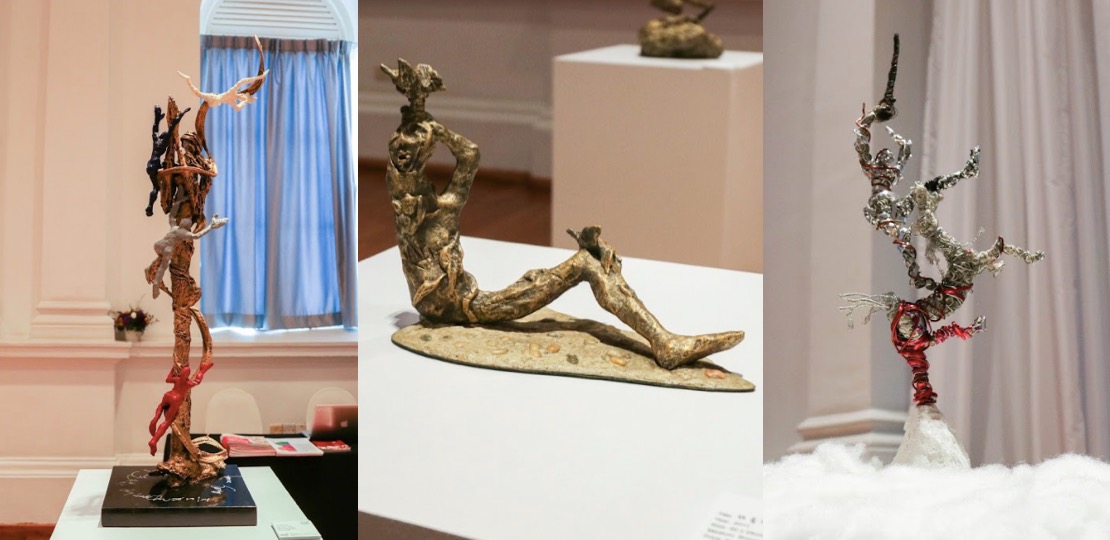 Photos by Rachel Ng
Photos by Rachel Ng
Different influences
Chng mentioned Singaporean artists Tang Da Wu and Cheo Chai-Hiang who were also in England around the same time, as her early influences.
But she was also heavily inspired by the social upheaval that were taking place in the late 20th century.
"For many years, I used all these social problems and environment problems and human nature, and use it as my inspiration."
Philosophers also influence Chng's work, including great thinkers from both East and West, like Goethe, Jean-Paul Sartre, Lao Tzu and Zhuang Tzu.
Expressing a fondness for history and literature, Chng also paid tribute to more recent writers like Lu Xun and Bo Yang for their sharp, satiric edge.
"(They) commented on the funny side of life in some ridiculous ways. Very sad or very ugly side of things."
Future of art in Singapore
One visitor to Chng's exhibition was Senior Parliamentary Secretary for Culture, Community and Youth (and Transport) Baey Yam Keng.
He regards Chng as a "person of strength" and someone who was inspiring as both an artist, and a person.
When asked how the government could support young artists in Singapore, he believes the way forward is providing possibilities for people to pursue their passion.
The proper training and environment could be helped provided by institutions like NAFA, the School of the Arts, and LaSalle College of the Arts. Said Baey:
"I think really allowing the people to be able to do art, appreciate art in different ways that suits their lifestyle and their commitment. This is the only way that a thousand flowers will bloom."
However, Chng still feels that young artists in Singapore today will face difficulties in trying to sustain themselves:
"I think it's not easy lah, because the market is very small. And then people don't have this kind of hobby, to purchase artwork. Then you want to survive as an artist, I think still not yet lah. It can be a struggle.
Unless you really, really like art, then no choice. You have to suffer. You have to run through it."
Morality is most important
Chng has never been shy about tapping into political themes in her work. She believes that in the long run, a more open society would be a healthier one.
"I think our government has done a good job for the people. But sometimes I feel they should be even more open. I think Singaporeans are very guai, we used to keep quiet. And then actually, this is not a good sign. I think government should be more open."
At the end of the day, one of Chng's goals for her exhibition was to spark certain emotions in the visitors.
"They can see how one artist struggled for over half a century, and then maybe they will know as an artist, it's not enough. You have to be very, very persistent. How many artists can be around for half a century and still carry on?"
If there was one message that she wanted younger artists to take to heart, it was that that morality, not art, should be the most important thing in their lives.
"To be an artist or to make art is not that important. You should know how to be a real human being. Your morality, your integrity, whether you are trustworthy. (Whether) you are a benefit to your community or a benefit to the country. I think that's more important, (rather than) every day so self-centred and (struggle) for their own benefit."
Top image by Rachel Ng.
If you like what you read, follow us on Facebook, Instagram, Twitter and Telegram to get the latest updates.
